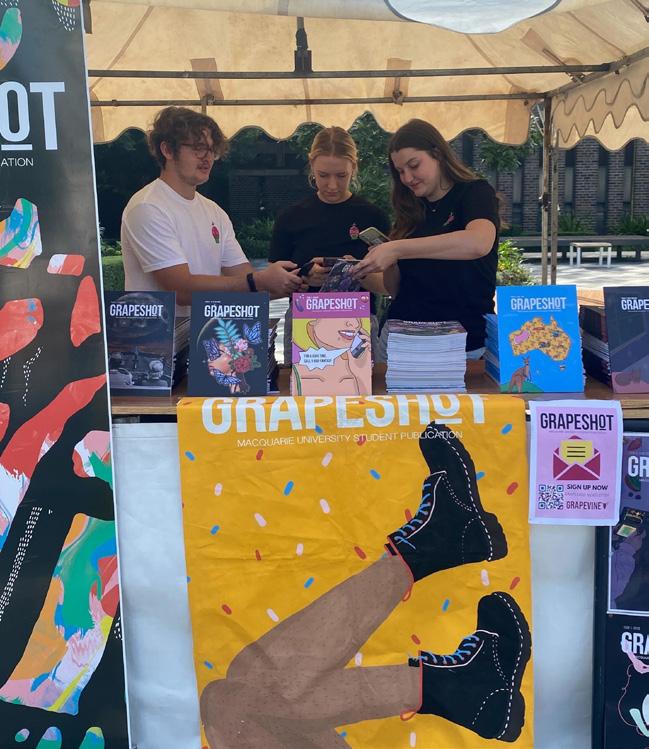
2 minute read
Love, Loss and What I Wore: An Ephron Review
able as vegan, so you’ll never again have to pick away at plain chips or a sad bowl of lettuce for dinner when you go out for girls’ night. Also, their meat is halal, which is winner winner winner winner winner x50.
As for the Underground section, it’s cosy but organised, with a big fuck off bar to the side and a sunken-in dancefloor in front of a small main stage, where they do both live music and repeat nights. It is a tad bit too loud even for a club, because the speaker’s fucking shoulder height in a closed-in space, but it’s a good atmosphere, it doesn’t feel like you’re going to be assaulted. So, bring earplugs if you care about your health. Or don’t. Also, for an underground ven ue, it’s not too crowded, though that might change as the business grows. Not sorry for this article.
Advertisement
They also do Doordash and Uber Eats if staying at home is more your scene. Go support them right now now now now or on the weekend when you have a girlies’ night next.
https://www.marys69.com/
Grapeshot’s new Repeat Offender, “Go To”, supports local venues and businesses. If you’re a local venue/business looking for a boost, you can contact us at grapeshot@mq.edu.au
by Clara Kristanda
Bras, prom dresses, and mother/daughter relationships – oh my!

Love, Loss and What I Wore, a play written by beloved Ephron sisters Nora and Delia, encompasses the turbulent experience of transitioning from girlhood to womanhood. The bildungsroman of femininity is told through a series of monologue-esque vignettes from our leading lady, Gingy. However, the stories of other women are also interwoven in ‘Clothesline’ scenes in which various women air out their dirty laundry for readers and viewers to nod along with familiarity and understanding.
A reflection of life through articles of clothing imbued with memory-specific events, the play identifies the significance of clothing in one’s self-expression and identity. It takes fashion seriously, identifying how it relates to and affects various relationships – whether platonic, romantic, or maternal. As Gingy finds herself and refinds herself through clothing, we gain insight into the feminine experience. One of the ways this is achieved is through mothers – let’s face it, they’re always either our greatest supporters or our harshest critics. Sometimes they’re even both, and often the change from one to the other comes without warning. Nora and Delia Ephron describe this shift so viscerally, whether it’s when buying your first bra, choosing a dress for the school formal, or buying that risqué top on that unsupervised teen shopping trip. However, they also identify mothers as our greatest teachers; the ones who have all the answers to the irrational fear of “pendulum breasts”, the desire for “plastic balloon inserts”, and whether you do in fact look silly wearing that on your head.
Based on a selection of short stories by Ilene Beckerman, the adapted play introduces a playfully comedic twist that the Ephrons are known for. Despite the comedic aspect brought to Gingy’s story, a sense of vulnerability is maintained throughout, inviting readers and viewers alike to empathise with her experience. Each monologue is sincere and well-crafted, in a way that I can describe as nothing but delicious. Though first written in 1995 and then adapted in 2008, the play still holds great resonance in our contemporary context and speaks to wide audiences and tastes. The enduring nature of Love, Loss and What I Wore is a testament to the sisters’ undeniable talent and the raw depiction of femininity presented within each scene. This one’s a hard text to get your hands on, so I’ll let you in on a little secret: print copies are currently available from the Dramatists Play Service (dramatists.com).
Grapey Rating: 4.5/5


by Jasmine Oke










